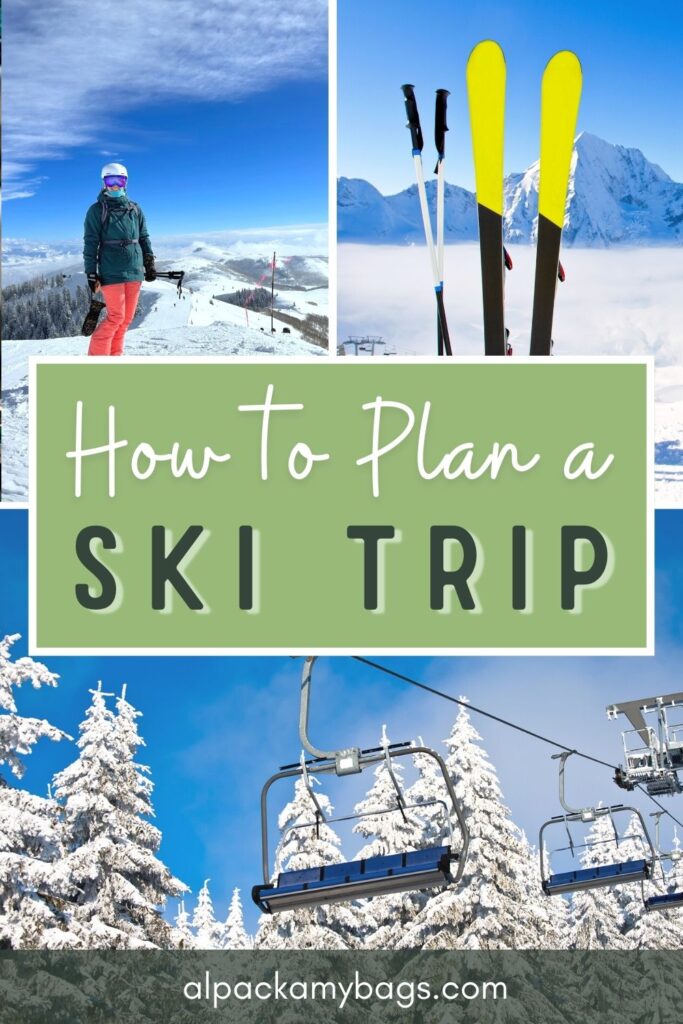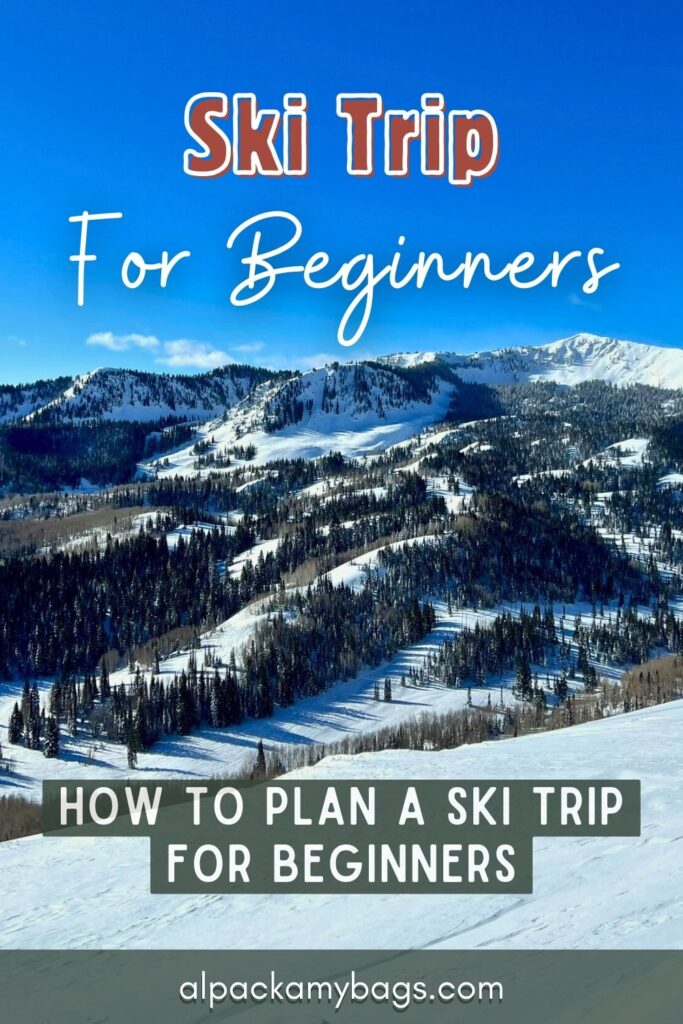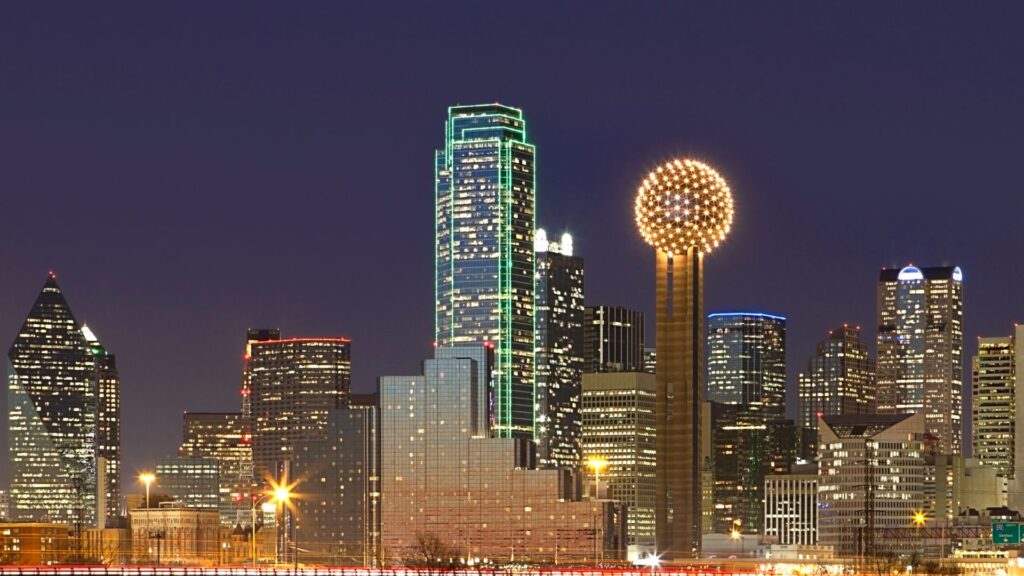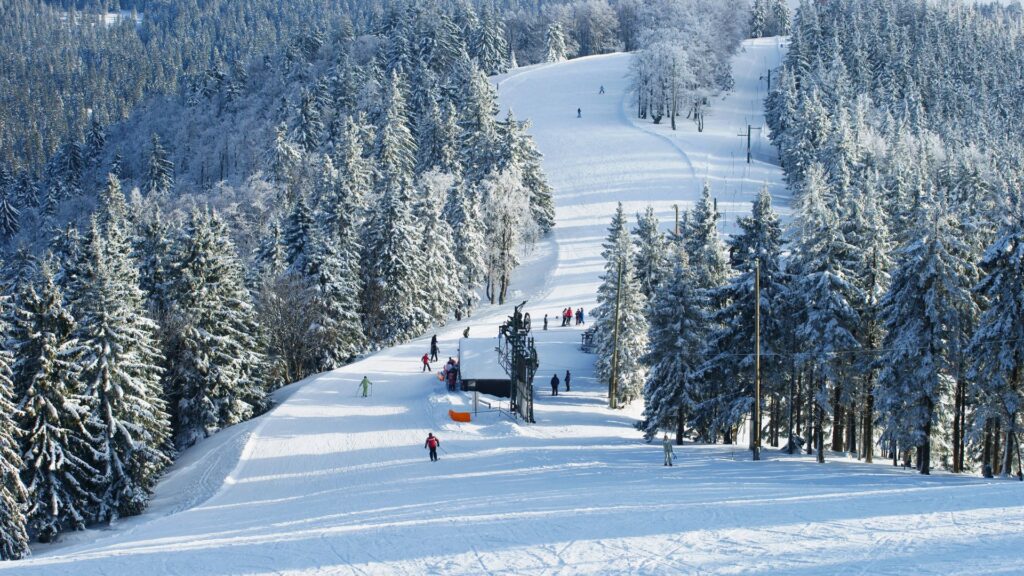
Beautiful winter views, fresh mountain air, cozying up at a local coffee shop or brewery, soaking in a hot tub, and chatting with fellow skiers are all things that make skiing a great way to have fun in winter. Learn how to plan a skip trip and enjoy these perks for yourself!
It’s never too late to learn how to ski or plan your very first ski trip. This winter sport is fun for all ages; you can ski as extremely or as leisurely as you want. But to make the most of any ski trip, it’s important to plan in advance.
Skiing is an expensive activity, although worth every penny, but if you plan your ski trip in advance, you’ll be able to save more money. The closer to the ski season you book, the more expensive flights, hotels, and lift passes are likely going to be.
As someone who has been skiing for more than 20 years and is now the main travel planner in the family (hence the travel blog), I know a thing or two when it comes to planning a ski trip. So let’s dive into how to plan a ski trip with money saving tips and first-time skier recommendations.
Article Contents
This article may contain affiliate links, meaning we get a small commission at no extra cost to you if you make a purchase through one of them. Read our affiliate disclosure. Thank you for your support!
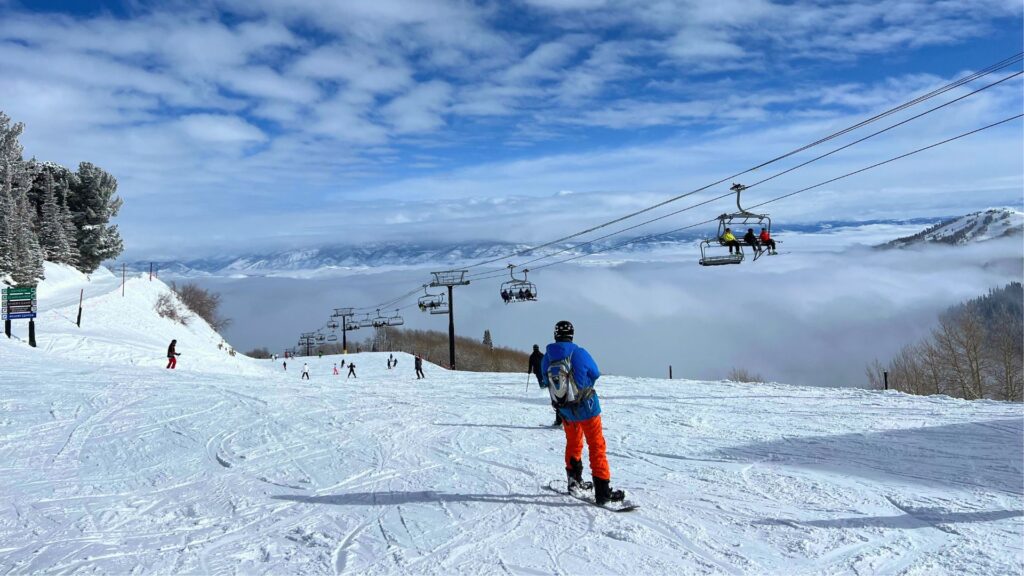
How to Plan a Ski Trip: What to Consider
Before you hit the slopes, there are some things to consider when planning a ski trip. Make the most of your winter adventure and plan well in advance.
⭐️ Park City, Utah: Planned-for-You Ski Trip Itinerary
If you’re ready to book a ski trip but you don’t have time to research and plan, I can highly recommend visiting Park City, Utah. Check out my planned-for-you ski trip itinerary Park City edition!
With one of the very best ski resorts for beginners in the US, Park City is a fantastic place to plan a beginner ski trip to. And the great news? I’ve done the hard work for you!
You can utilize my super convenient Park City ski trip itinerary to book your entire winter adventure today. From accommodation to ski rentals and lessons to restaurants and reservations, all the info for planning a ski trip to Park City is in this one easy to use ski trip guide.
When to Plan a Ski Trip
If possible, start planning your ski trip 6 to 12 months in advance. Many popular ski destinations are booked well in advance to the ski season (typically December to April).
Hotels and vacation rentals will generally be cheaper the farther you book in advance, and you’ll have many more options to choose from.
Lift tickets, such as Epic’s season pass, are also cheaper if you buy them earlier in the year versus right before or during the ski season.
In the northern hemisphere where skiing is abundant (think the USA, Europe, and Canada), the ski season is typically December through April.
Christmastime can be very busy as many families ski for the holidays. January and February are the coldest but also the quietest months for skiing.
March and April offer spring skiing conditions (warmer weather) but larger crowds around school’s spring break.
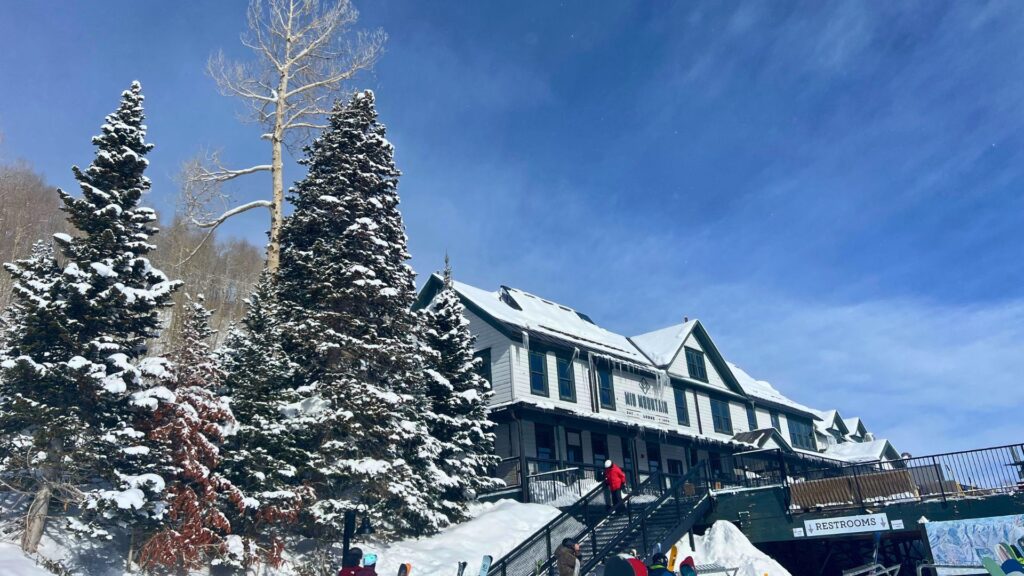
How Long to Plan a Ski Trip
If you’ve never been skiing before, I recommend planning at least four days on the mountain. This will give you time to take a couple of lessons and hopefully be able to test your new skills on green runs the last couple of days.
If you have the time, the longer the ski trip the better, as you’ll have more time to practice and not feel rushed. If you only have two or three days, you might not get the chance to really test your skiing or snowboarding skills.
Best Ski Resorts for Beginners
If you’re new to skiing, the options can be overwhelming. There are so many ski resorts in the United States, Europe, Canada, and beyond.
I recommend sticking closer to home if possible. If you live somewhere snowy, see if there are any ski resorts within a few hours of you.
This way you can try skiing without breaking the bank, see if you enjoy it, and then book an even bigger ski trip next season.
If you don’t live near skiing, the best places to ski in the United States are Colorado, Utah, and California. You’ll find big name ski resorts in these states, like Park City in Utah, Mammoth Mountain in California, and Breckenridge in Colorado.
Larger ski resorts tend to be more expensive, but they also generally have great ski schools, many amenities for new skiers, and a plethora of beginner ski runs.
Skiing is Physically Demanding
Learning how to ski can be challenging, but it is so rewarding! You will fall, it’s just part of the learning process. But once you’ve learned how to stop, turn, and accelerate, you’ll be hitting the green runs (beginner) in no time.
Remember to give your body the rest it needs. Stay fueled with good food and plenty of water. Take a couple of lessons to learn the basics and stay safe. And rest before your body gets overtired.
You don’t want to go full force the first day and be so sore you can’t even think about skiing the next. If your accommodation has a hot tub, take advantage of it as it will help your muscles relax and be ready for more skiing.
Enjoy après-ski activities like social drinking to wind down. Try to get a good night’s sleep, and don’t push yourself to the point of exhaustion. Don’t expect to be a pro after two days of skiing, just enjoy your time on the mountain!
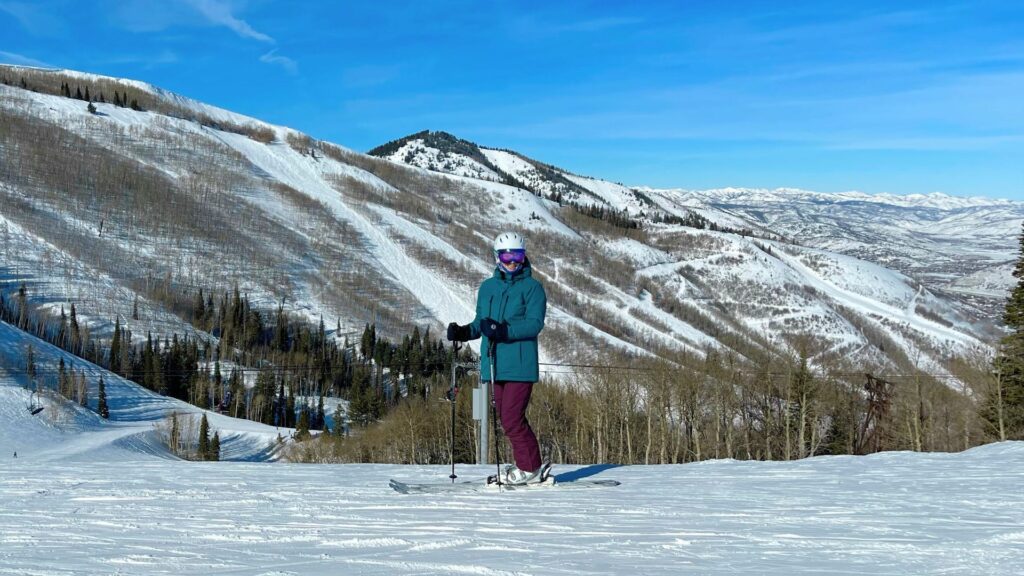
Planning a Ski Trip
1. Setting a Budget
Skiing is expensive; give yourself a budget for your ski trip so you don’t spend more than you can or want to. There are several factors to consider when setting a budget including, flights, accommodation, lift tickets, length of your ski trip, gear (buying or renting), food, and transportation.
Flights: Will you have to fly to a ski resort?
Accommodation: Can cost anywhere from $100 to $1,000 per night.
Lift Tickets: Average of $142 per day.
Length of Trip: How many days can you go?
Ski Gear: Rentals cost around $40-80 per day; buying gear is expensive but costs less over time if you ski every year.
Food: Plan to spend $15-50 per meal while skiing if you dine out.
Transportation: Can you walk to the ski lifts from your accommodation or will you need a car or public transportation?
2. Picking a Ski Destination
There are hundreds of ski destinations, also known as ski resorts, around the globe and they all vary in price. Start by researching what ski resorts are closest to your home base, or research how much your dream ski resort costs (lift tickets, nearby accommodations, food, etc.).
From California to Canada, from France to South Korea, the options are endless when it comes to great ski destinations. Your budget will likely help you decide where you want to go skiing; i.e. the closer it is to your home, the less it will likely cost to get there.
The US is home to some of the best skiing in the world. If you’re new to skiing or looking for another amazing mountain to explore by skis, plan your ski trip to Park City, Utah.
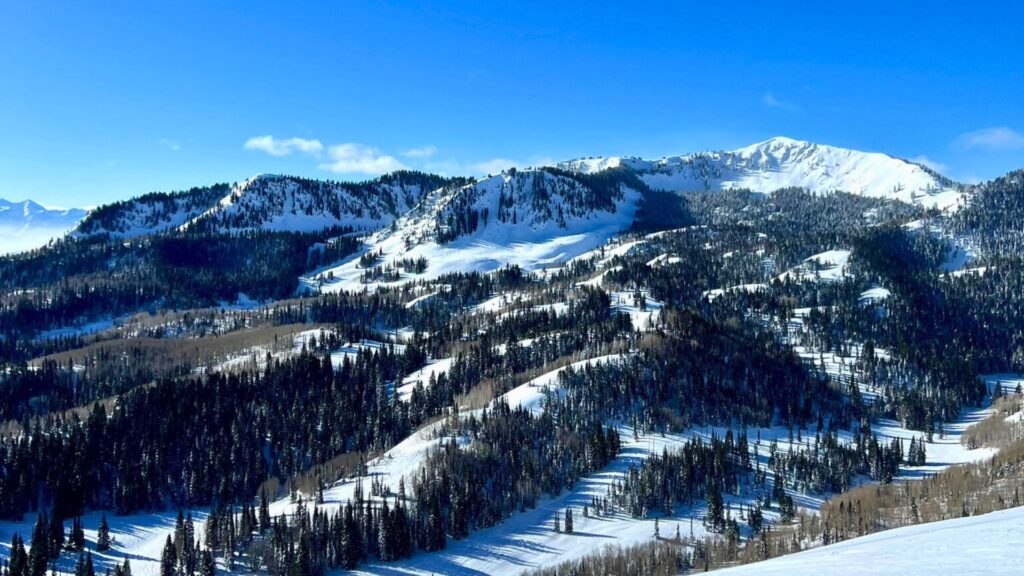
3. Accommodation Options
Once you’ve found the ski resort you want to visit, start browsing for accommodation nearby. You may find that the cheapest resort is actually in a more expensive town which may affect your budget.
Many ski resorts have lots of accommodation options, from ski-in/ski-out hotels to Airbnb and other house rentals to budget hotels. Generally, the closer you are to the ski resort the more expensive it will be.
I recommend starting your search for skiing accommodation on Booking.com or Airbnb.
4. Choosing the Right Time to Go
The ski season in the US (and most of the northern hemisphere) is from late November through March. December is often more expensive as many people go skiing around Christmas, and March can be more expensive as the slightly warmer weather attracts more people.
On average, January and February are the cheapest months to plan a ski trip. This is usually the coldest, but quietest time of the season. The ski runs and lift lines will likely be less crowded and you’ll save money by skiing in January or February.
How Long to Ski: Price and fitness levels will help you decide how long to ski for. This is an expensive sport, the longer you ski for the more it will cost, but know your money will be well spent. Skiing is also very physically demanding. Plan to spend at least 3 days on the slopes to get the hang of it.
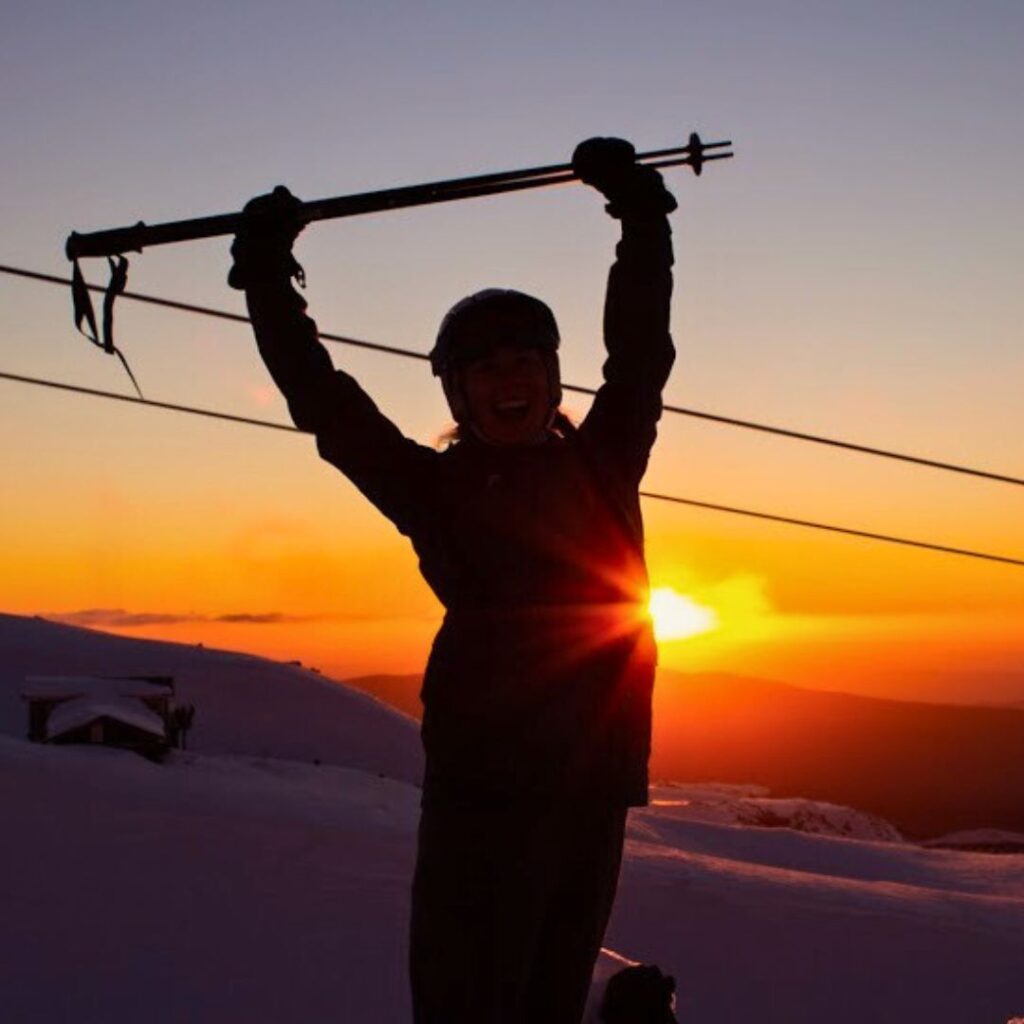
Planning a Ski Trip Recap:
Set a budget
Find a ski resort and figure out how to get there (fly or drive)
Book accommodation and lift tickets
Book your rental gear or buy used gear
Visit in January or February for a quieter, cheaper trip
Give yourself time to pick up the basics of skiing
How to Plan a Ski Trip on a Budget
Transportation
Look for flights in advance or carpool if you plan on driving to the ski resort you choose. Research your chosen ski resort to see if there is public transportation that can take you to the slopes. This is often cheaper or free.
Having your own car on a ski trip is often helpful. If you can split the cost of a car rental and gas between multiple people, it will likely be less than paying for rideshares or private transfers.
Often you can find hotels or vacation rentals available that are still within walking distance of the ski lifts but are cheaper than ski-in/ski-outs. Or you can stay somewhere like Park City, Utah where there is a free shuttle you can rely on.
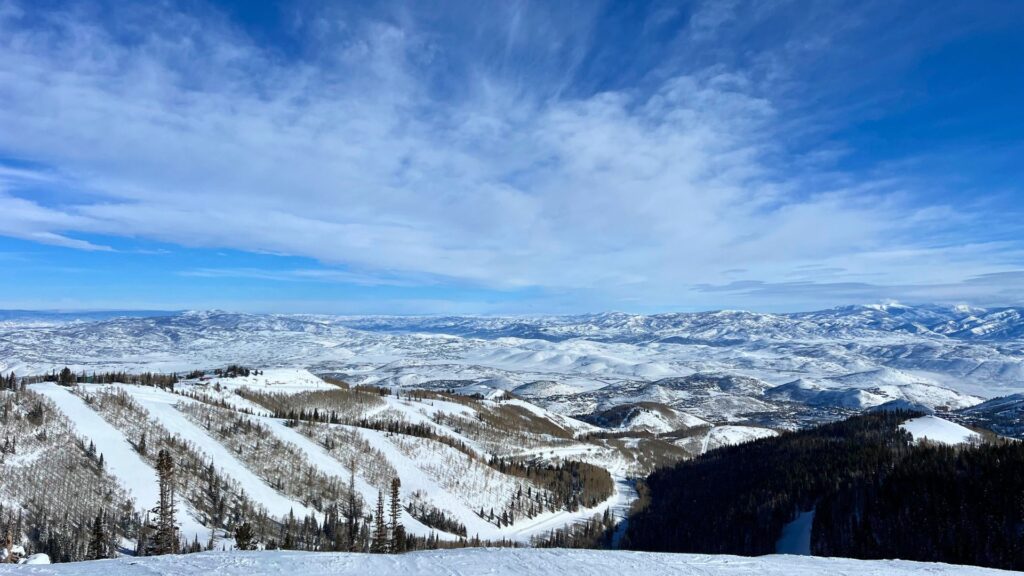
Accommodation
If you’re going skiing with a group, save money by rooming with more people. Staying in a ski-in/ski-out gives you the fastest access to the slopes; you won’t need a car during your ski trip, but your accommodation will be more expensive.
Often staying in an Airbnb or other similar rental can save you money on a ski trip. If you have a group, you can split the cost between everyone but still have the privacy of separate bedrooms.
If your rental has a kitchen, you can also save money on food by cooking for yourself instead of dining out for every meal.
READ NEXT: How to Save Money on a Ski Trip
Destination
The first way to save money is by planning your ski trip to the closest ski resort to your home base. The shorter the flight or drive, the cheaper it is likely going to be to get there.
Once you find what ski resorts are closest to you, start looking at the lift ticket prices to find the cheapest resorts. Lift ticket prices can vary by a lot, so this cost will likely help you choose which ski resort to visit.
Equipment: Rentals vs. Buying
If you plan on skiing again, like every year, for example, consider investing in your own ski equipment. Ski and snowboard gear runs very expensive, but you don’t need the newest, most expensive skis on the market to have a great ski trip.
You can often find used gear in good condition for much less. Search Facebook marketplace, or take advantage of an REI membership and browse their outlet deals and used gear. The best time to buy ski gear is at the end of the ski season, around April. Ski gear won’t be in high demand so prices go way down.
Over time, you’ll spend less money buying your own gear than renting it every trip. However; if it’s your first time skiing and you have no idea if you’ll ever try it again, rent all your ski equipment. This is a large investment so make sure you love to ski before you buy everything.
READ NEXT: 5 Tips for Minimalist Packing for Travel
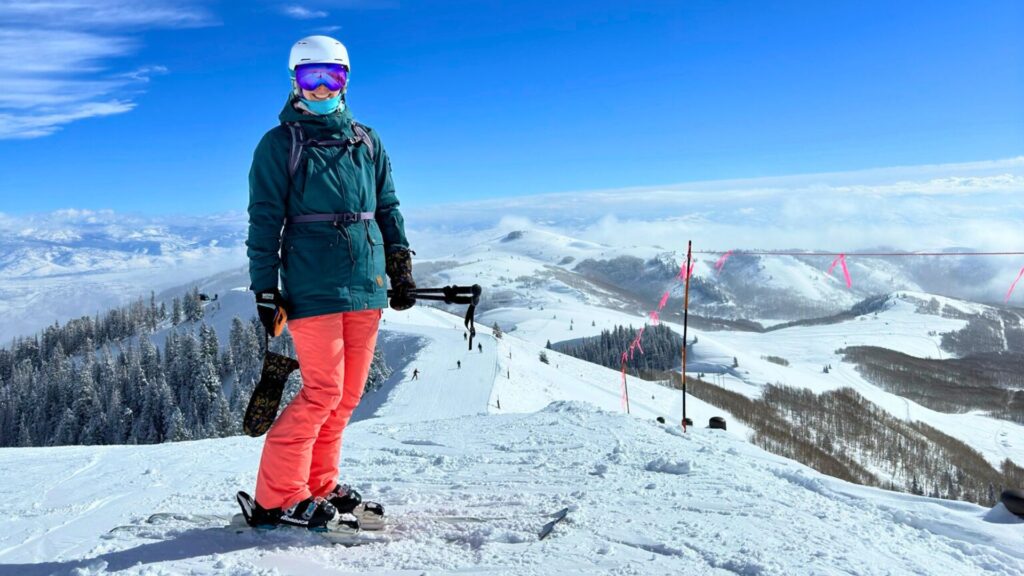
Finding Deals on Lift Tickets
Always buy your lift tickets in advance if you can. Often the further in advance you buy your lift passes, the cheaper they are. Resorts and lift ticket operators (Epic and Ikon) will increase the cost of lift tickets every couple of months as it gets closer to the opening of ski season.
Some ski resorts sell their own lift passes, but many operate through the two major ski lift pass companies, Epic and Ikon. Check to see if your chosen resort is included in either of these passes as their early season deals are hard to beat.
Generally, the more days you add to your lift pass, the cheaper it is per day. But if it costs less per day to ski for three days than it does for one day, overall you’ll still be paying more so keep this in mind. Epic usually has great multi-day lift pass deals so start here.
How to Plan a Ski Trip on a Budget Recap:
Carpool, walk, or utilize public transportation to get to the ski lifts
Split accommodation with a group & book in advance
If you have a kitchen, cook for yourself to save money on food
Ski closer to home to minimize flight/driving costs
Buy used gear or rent your gear if it’s your first ski trip
Check Epic and Ikon for lift ticket deals
Skiing Trip for Beginners: Preparing for the Slopes
Ski Trip Packing Essentials
Prepare for your ski trip with the ultimate ski packing list. From flying with gear to the must-haves for a successful ski trip, packing correctly is essential in this case. Wear waterproof ski pants and a ski jacket to stay dry and warm in the snow.
You can get surprisingly warm when skiing, so wear layers you can take on and off to stay comfortable. Don’t forget gloves, a neckwarmer, and good ski socks.
READ NEXT: What to Pack for a Ski Trip
Learning the Basics of Skiing
If this is your first time skiing, I highly recommend getting a lesson. An instructor will teach you the basics of stopping and going, how to carry and put on all ski gear, how to get on and off the chair lifts, and help you feel comfortable on the ski slopes.
Take at least one lesson as a feeler; you can often learn enough in these first courses to get yourself safely down green runs (beginner).
Safety Precautions
Stick to beginner runs until you truly know how to control your speed and stop. Most ski accidents are caused by people who don’t know how to stop or steer themselves. Know your abilities and slowly work your way up to more difficult runs. The work is worth it!
Ski Run Symbols
Staying safe is the number one priority when skiing. If you’re safe you can have the most fun! Before you head out on the ski slopes, learn what each ski run symbol means so you don’t find yourself on a far too advanced run.
Green Circle: Beginner, easiest runs
Blue Square: Intermediate, moderately difficult
Black Diamond: Advanced, more difficult
Double Black Diamonds: Expert, most difficult
Some ski resorts also use a red symbol which means intermediate. Red runs are slightly more advanced than blue runs, but not as advanced as black runs.
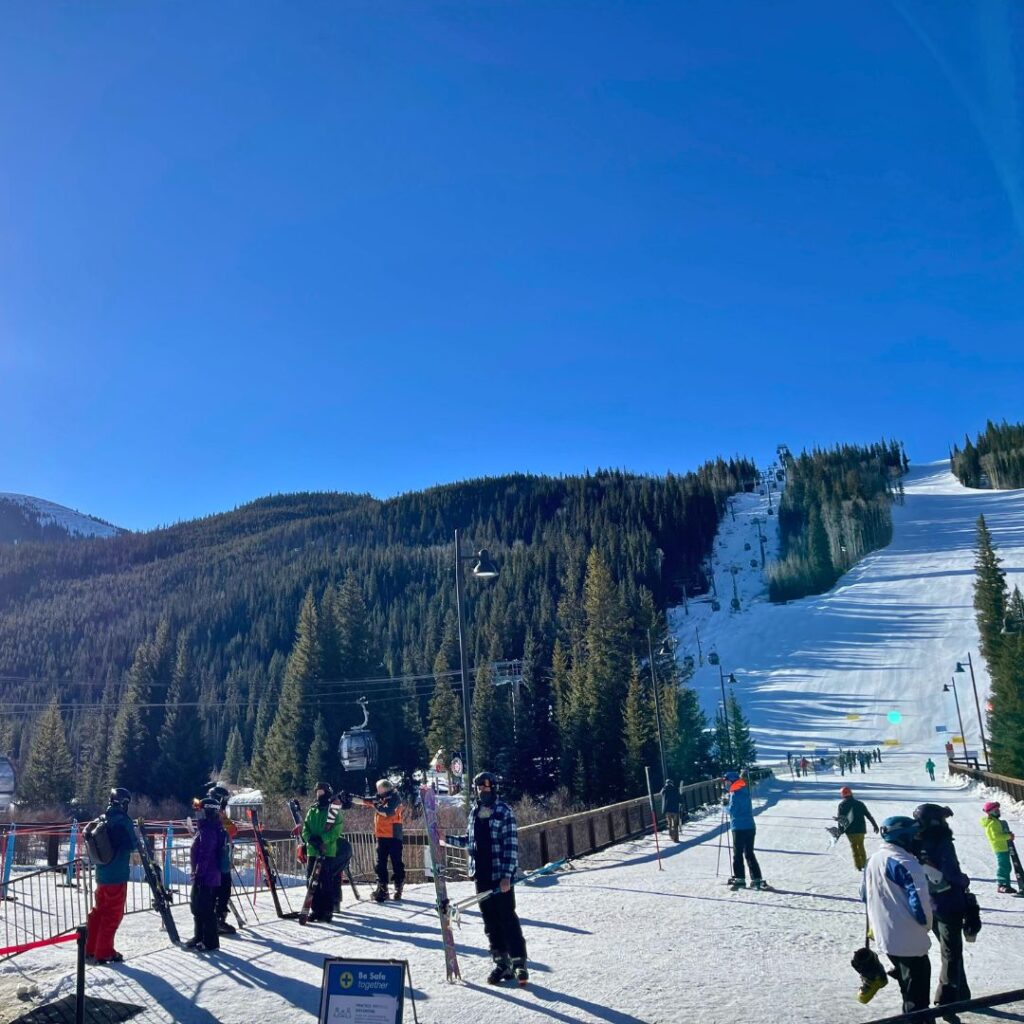
Skiing Trip for Beginners Recap:
Learn what to pack for a ski trip
Invest in a lesson so you can make the most of your ski trip
Stay safe to have fun; know your abilities
Remeber what the ski run symbols mean
Enjoying the Ski Trip
Ski resorts vary in size all around the world. There can be anywhere from ten to hundreds of ski runs in one single resort. Make sure you get a map of the ski resort before you hop on a lift, or see if your chosen ski resort has an app with maps, lift times, etc.
You can plan your route before you hit the slopes, or if you’re a confident skier, see where the day takes you! This is a fun way to explore a new mountain, but always make sure you know how to find your way back to the resort base.
Après-Ski Activities
Skiing can be a very social sport. Maybe you’re planning a ski trip with friends. Or you can spark up a conversation with fellow skiers while getting an après-ski drink. The ski community is an outgoing one, and there’s always a wild ski story to be heard.
Après-ski is a French term literally meaning “after ski.” Popular in many European countries and gaining traction in the US, après-ski is what you do after a long day of skiing.
It means different things in different places. At some resorts in Europe, après-ski can be a late-night Euro-pop dance party, and sometimes it’s a hot tub party or an evening of champagne and caviar.
In the US, après-ski often refers to drinking at a local craft brewery. Take a look at what après-ski activities your chosen ski resort offers! You might be surprised by how much more there is to a ski trip than just skiing.

It’s no secret that skiing is expensive, so when you can successfully plan a budget-friendly ski trip, it’s a win-win! Skiing for less? I’m in! If you’re going skiing with a group, split costs like car rentals, gas, accommodation, and even food.
Book lift tickets and accommodation in advance to get better options and cheaper rates. Splurge on a ski lesson so you can really enjoy the rest of your ski trip. Rent any gear you need in advance, and see if the rental company you choose offers drop-off and pick-up services.
If you plan on going on multiple ski trips, save money on gear by finding used gear or borrowing from friends. Grab a ski resort map and find the trails you really want to do. Stay out after a day on the slopes to have fun at some après-ski activities.
It’s never too late to learn how to ski which is a great reason for everyone to plan a ski trip! As a former ski instructor in New Zealand, I taught as many adults as I did kids, and seeing someone my age or older have skiing “click” for them made me so happy. I love skiing with a passion, and I want to help others fall in love with it!
Now you know how to plan a ski trip and the best money-saving tips, it’s time to get out your ski gear and pack your bags. The mountains await! Skiing is an incredibly fun sport that involves beautiful winter views, a social culture, and a fun way to stay active outdoors. Enjoy!
